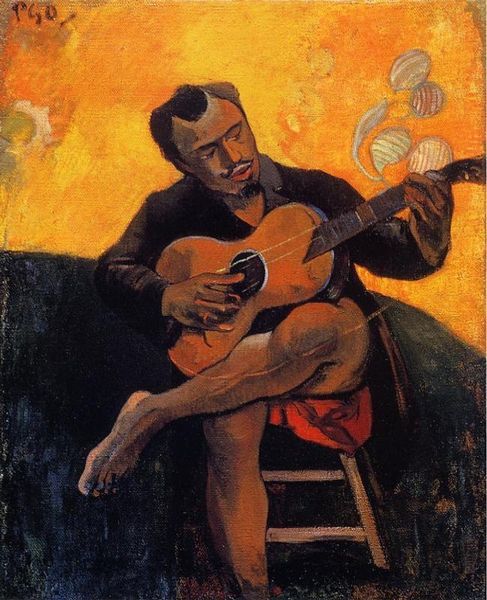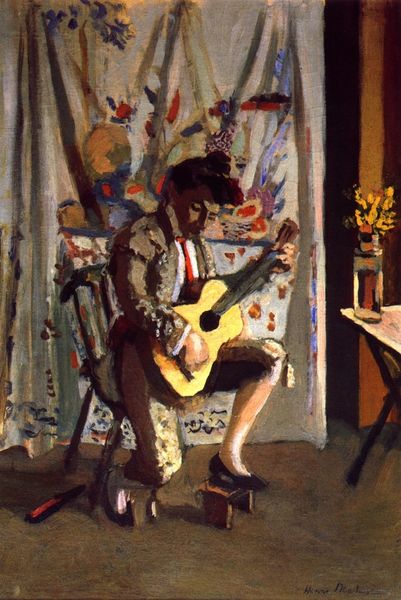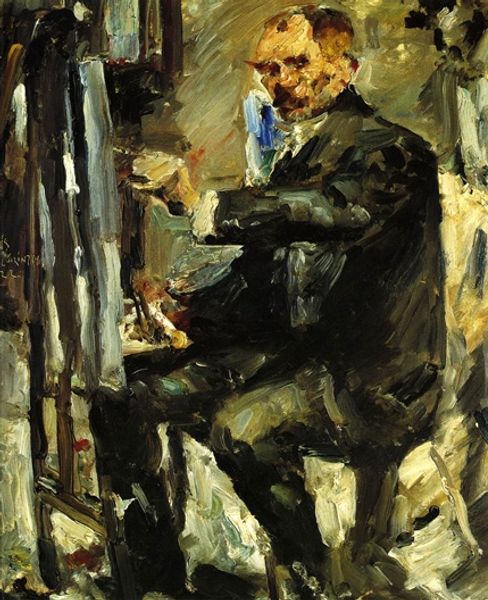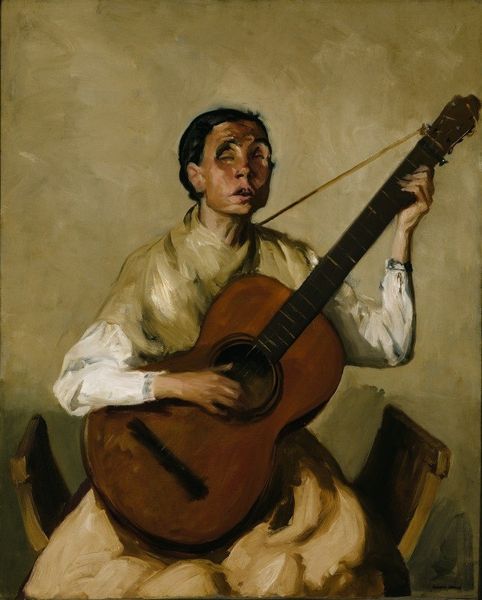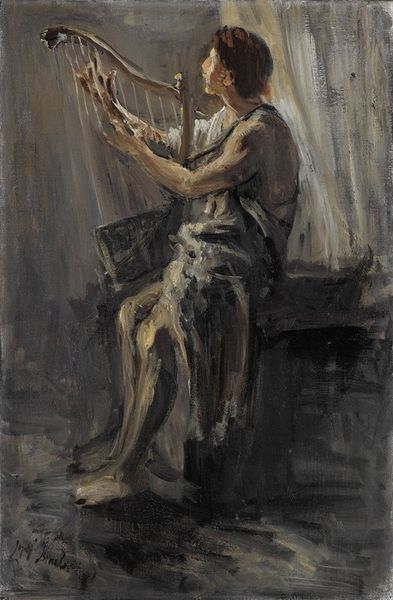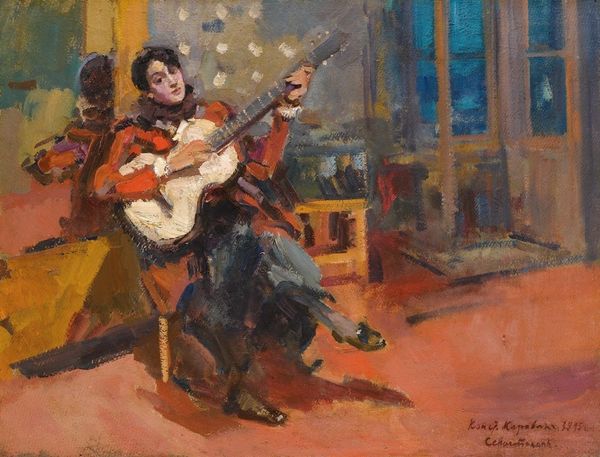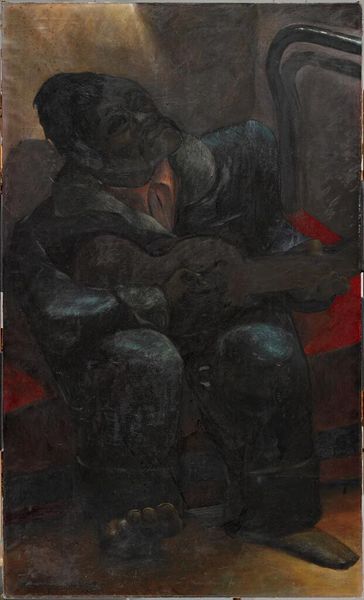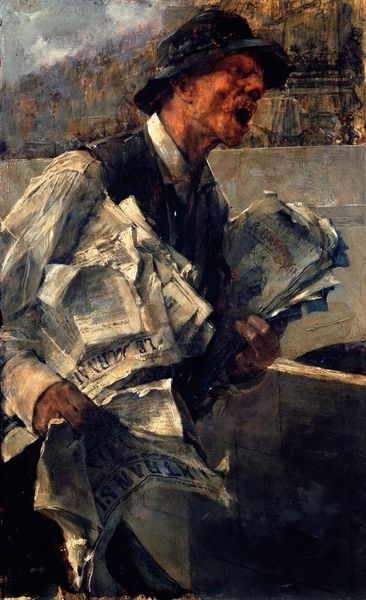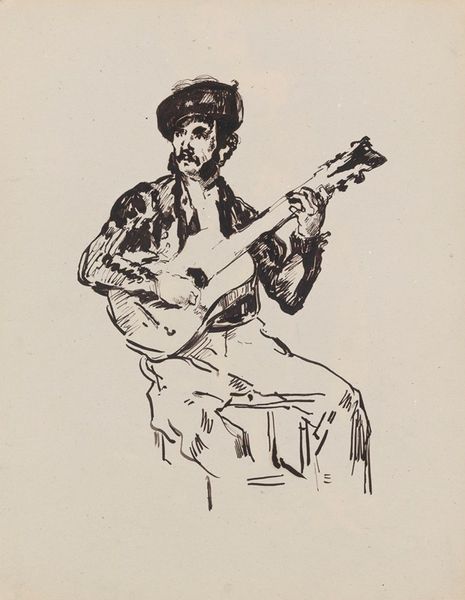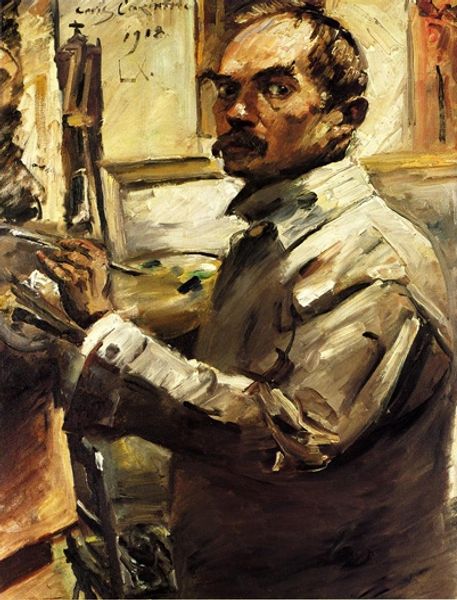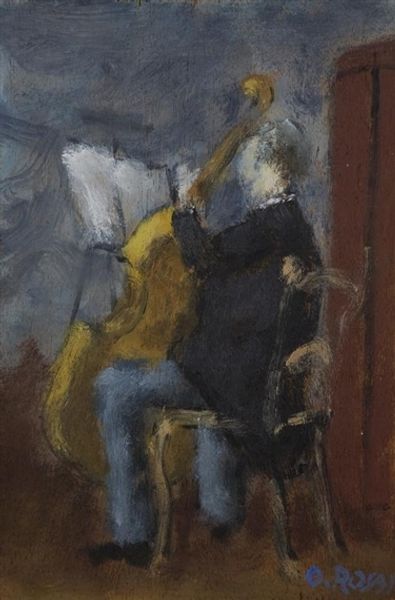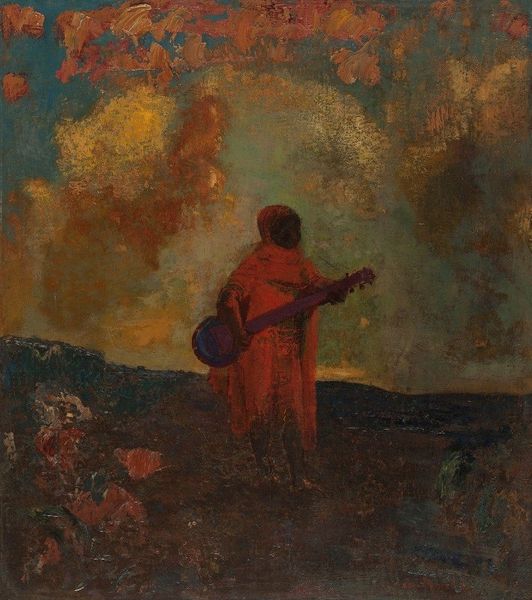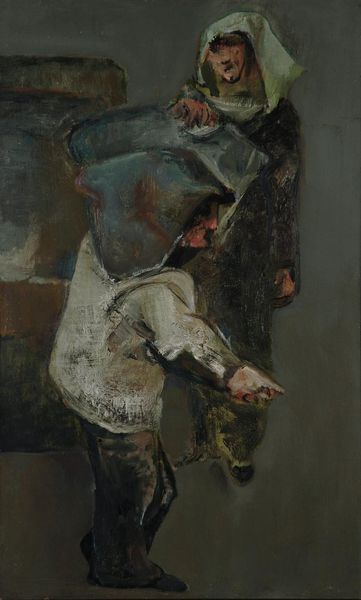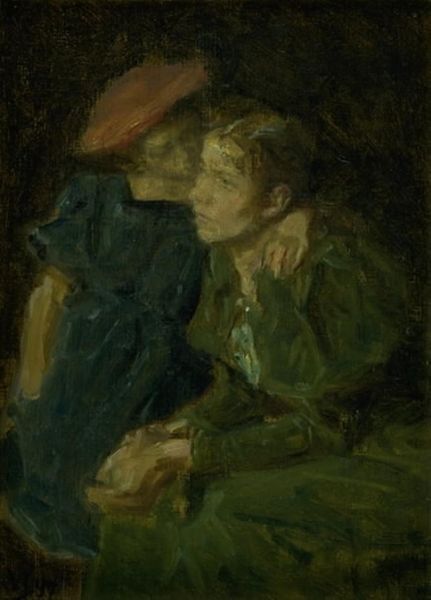
oil-paint, impasto
#
portrait
#
figurative
#
oil-paint
#
charcoal drawing
#
oil painting
#
impasto
#
underpainting
#
ashcan-school
#
portrait drawing
#
genre-painting
#
portrait art
#
realism
Copyright: Public Domain: Artvee
Curator: Ah, Thomas Eakins' "The Banjo Player." The energy just pops, doesn't it? It feels almost like you can hear the music swelling right out of the canvas. Editor: It’s... raw. That impasto is practically vibrating. There’s a discomfort to it, like the player’s tune is a bit discordant. It challenges the pleasant stereotypes often surrounding such musical scenes. Curator: Eakins had such a no-nonsense way of looking at things. This isn't a romanticized image of minstrelsy, but a slice-of-life observation. Think about how the Ashcan school embraced similar raw, everyday themes. I wonder what drew him to the genre scene? Editor: Exactly! This work pushes against prevailing, idealized depictions by presenting the musician in a relatively unadorned setting. He’s not on stage. Look at the sketchy background; it seems deliberately ambiguous, blurring any comfortable narratives. Is he challenging assumptions about race, class, or performance? Curator: You know, that underpainting creates such depth—it makes me think he struggled with capturing the essence of the banjo player, maybe feeling that something was always slightly beyond his grasp. Artists often do that. I think maybe, consciously or not, Eakins captured the bittersweet truth in performance and reality in early twentieth century Philadelphia. Editor: Absolutely, and art historians often contextualize it with the social and political currents of his time. These pieces didn't just exist in a vacuum. How was Eakins positioned to paint a scene like this? What was he attempting to negotiate between representing a Black performer versus critiquing societal conditions of artistic expression? Curator: I suppose when I see art, the question that follows the art piece surrounds the feelings it invokes in the artist. Was it his experience when creating art and art for me becomes what can create emotion. Perhaps even understanding it or disliking it? The Banjo player invokes the bittersweet tension inherent in the human experience for me. What an impressive moment. Editor: Right. Ultimately, Eakins leaves us with a provocative portrait rather than easy answers. We grapple not just with what’s on the canvas but also what it signifies about artistic privilege and representation. A worthwhile point when exploring American imagery and the power structures framing it.
Comments
No comments
Be the first to comment and join the conversation on the ultimate creative platform.
